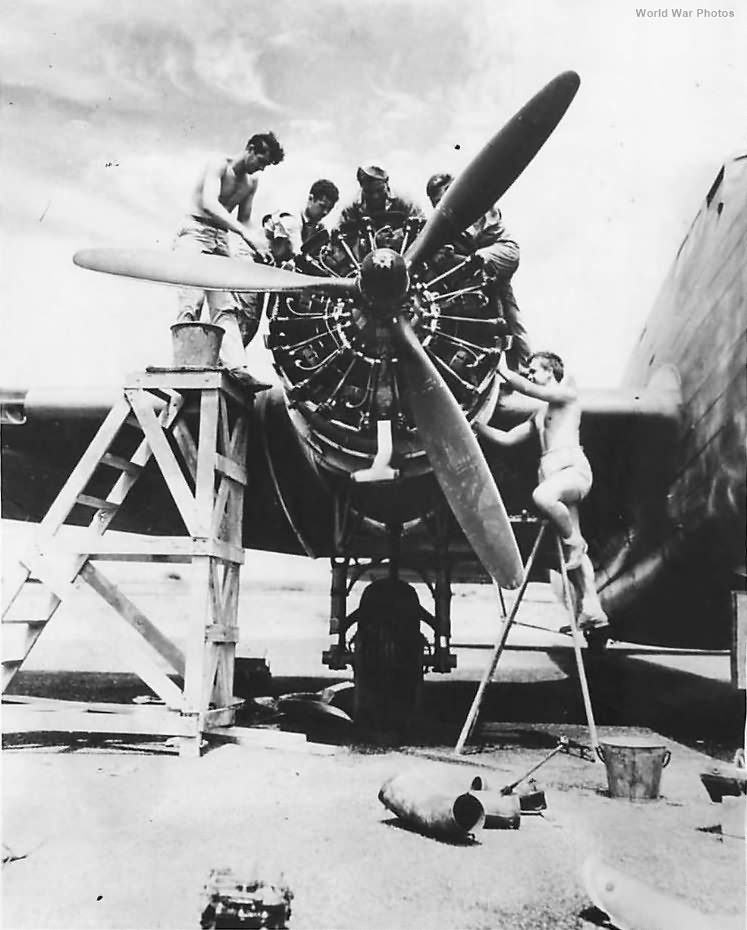The B-18 Bolo was powered by two Wright R-1820-45 radial engines, each a robust and reliable powerplant with several key features and specifications. Below is a detailed overview of these engines, along with the propellers they drove:
Wright R-1820-45 Radial Engines:
Type and Series:
- The engines were nine-cylinder, one-row, air-cooled radial engines from the Wright Cyclone series. Specifically, they were part of the G-series, which replaced the F-series at the start of World War II.
- These engines were widely produced during the war, with Studebaker manufacturing the majority of them in South Bend, Indiana, and supporting factories in Fort Wayne, Indiana, and Chicago.
Construction:
- The engine featured a steel crankcase made of two sections split along the cylinder centerline.
- The cylinder heads were made of cast aluminum and were both screwed and shrunk into steel barrels.
- Each cylinder was equipped with one inlet valve and one sodium-cooled exhaust valve, both actuated by push rods.
Supercharger:
- The R-1820-45 engines were equipped with a gear-driven, two-speed supercharger developed by Wright, replacing the less efficient General Electric type used in earlier F-series engines. This improved engine performance, particularly at higher altitudes.
Carburetor:
- The engines used a Bendix-Stromberg PD-12H3 two-barrel injection type downdraft carburetor with automatic mixture control, along with a four-position manual mixture control.
Cooling:
- Cooling was enhanced with deeper and more numerous cooling fins. The G-series engines featured an additional cooling fin compared to the F-series, helping to mitigate the chronic overheating issues associated with radial engines.
Attachment:
- The engines were mounted to the nacelle firewall at nine points using rubber fittings to reduce vibrations.
Exhaust:
- The exhaust collector ring was composed of two sections, each made up of four segments, designed to manage the high temperatures and pressure of exhaust gases.
Engine Variants:
- R-1820-53:
- The B-18, B-18B, and B-18AM models were powered by the R-1820-53 series engines, which were similar to the R-1820-45 but with a larger impeller. These engines were specifically designed to use 100 octane gasoline instead of the standard 87 octane fuel, offering better performance.
Performance Specifications:
- Rated Horsepower:
- 930 hp at 2,100 rpm for takeoff
- 830 hp at 2,100 rpm at sea level
- 860 hp at 2,100 rpm at 3,200 feet
- 810 hp at 2,100 rpm at 10,300 feet
Engine Controls:
Throttle and Propeller Pitch:
- The controls were grouped at the upper end of the control pedestal and could be operated individually or together by either the pilot or co-pilot. These were spring-loaded and manually adjusted to hold the desired positions.
- The engine controls were cable-operated, connected to bellcranks on the firewall, and further controlled by push-pull rods forward of the firewall.
Carburetor and Supercharger:
- The carburetor was a two-barrel downdraft Holley type mounted on top of the supercharger section. Fuel mixture was fed through an annulus to the General Electric supercharger impeller before being delivered to the cylinders.
Ignition and Starting:
- Ignition was provided by two Scintilla magnetos mounted on the rear cover, firing two spark plugs per cylinder.
- The engines were started using an Eclipse Hand Electric Starter (Type C-21), operated by solenoid starting and meshing switches. A hand crank was also provided as a manual backup.
Lubrication and Electrical System:
- Lubrication was managed by a dry sump system, with one pressure pump and one scavenge pump.
- Electrical power was supplied by two Type E-5 engine-driven generators, one on each engine, which charged the aircraft’s batteries.
Propeller:
Type and Features:
- The B-18 was equipped with Hamilton-Standard Hydromatic constant-speed, three-blade, fully feathering propellers.
- These propellers were critical for managing engine performance and efficiency, allowing adjustments to blade pitch to optimize thrust under various flight conditions.
Dimensions:
- Blade Length: 6 feet, 6 inches
- Propeller Hub Height (at rest): 8 feet, 6 inches
